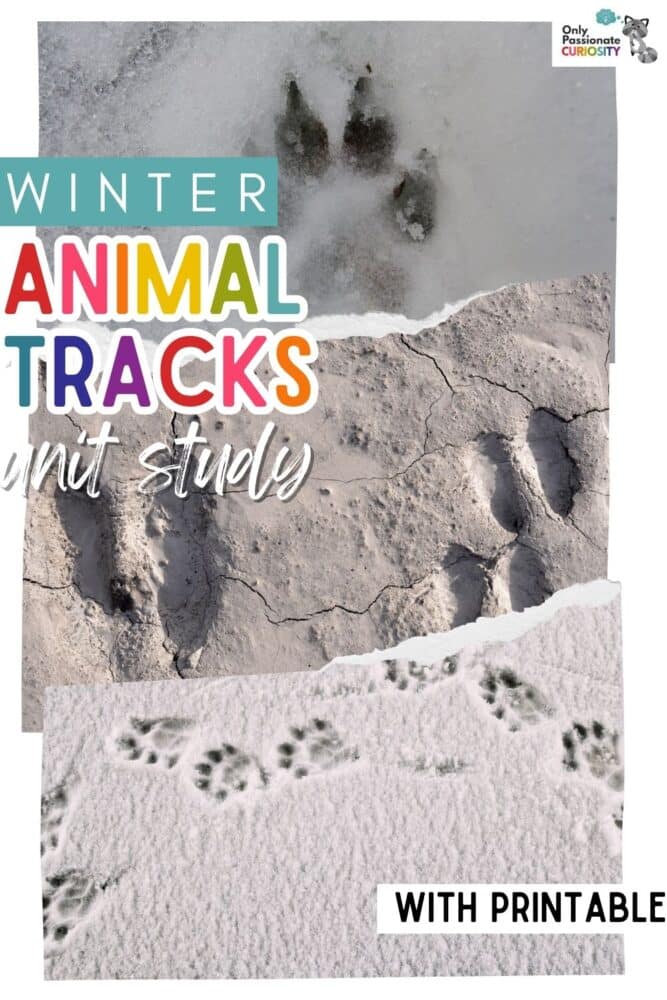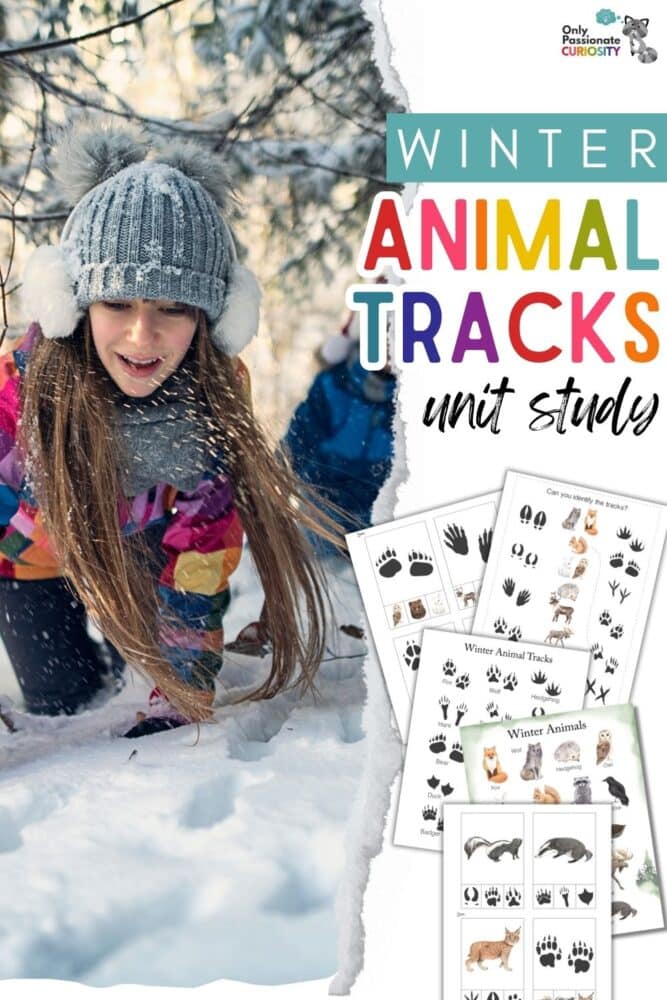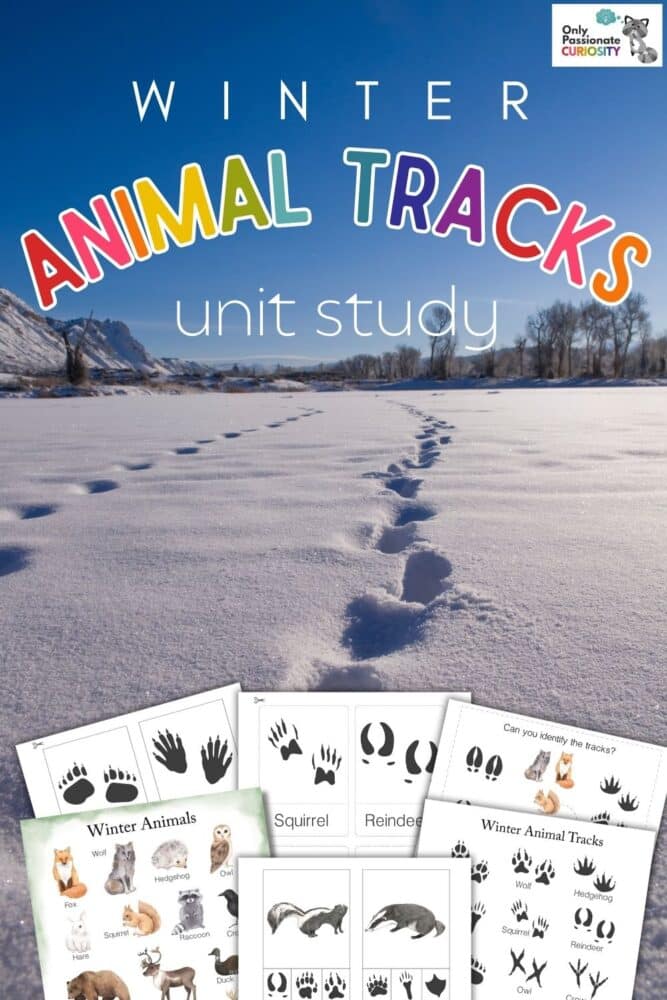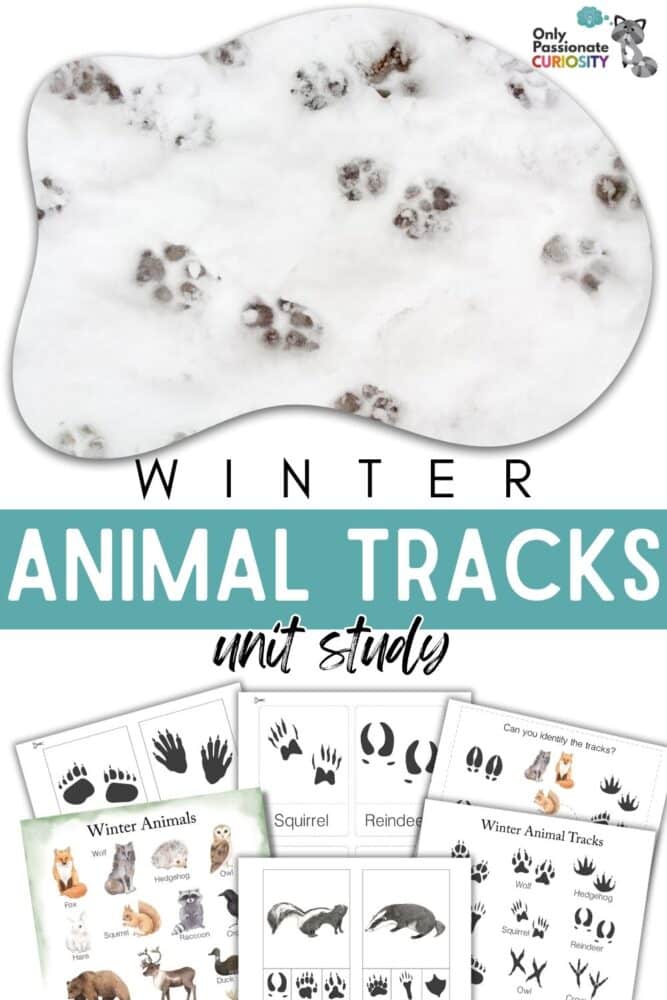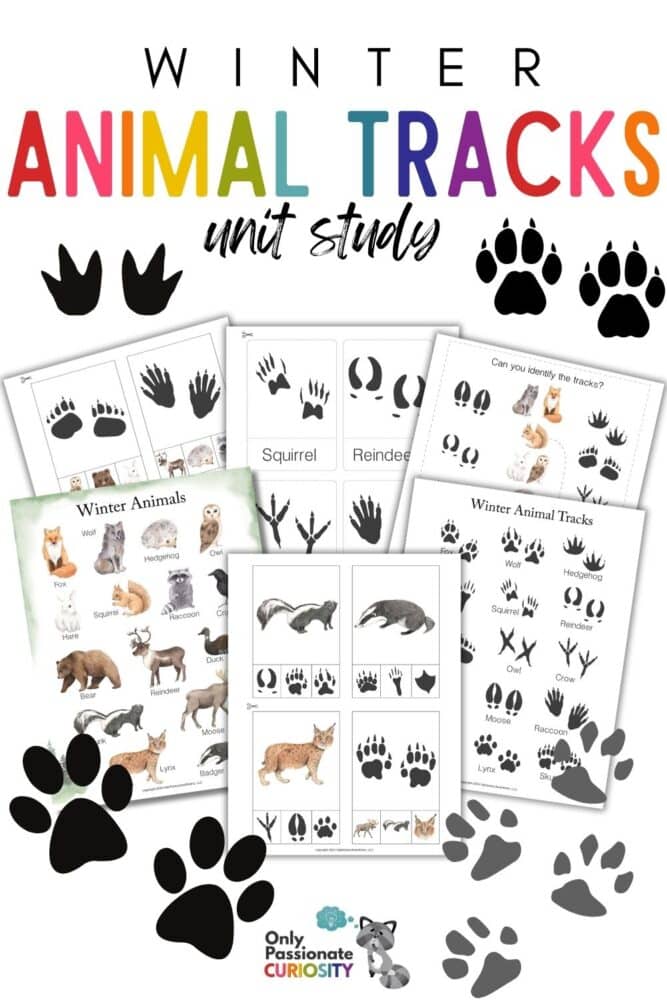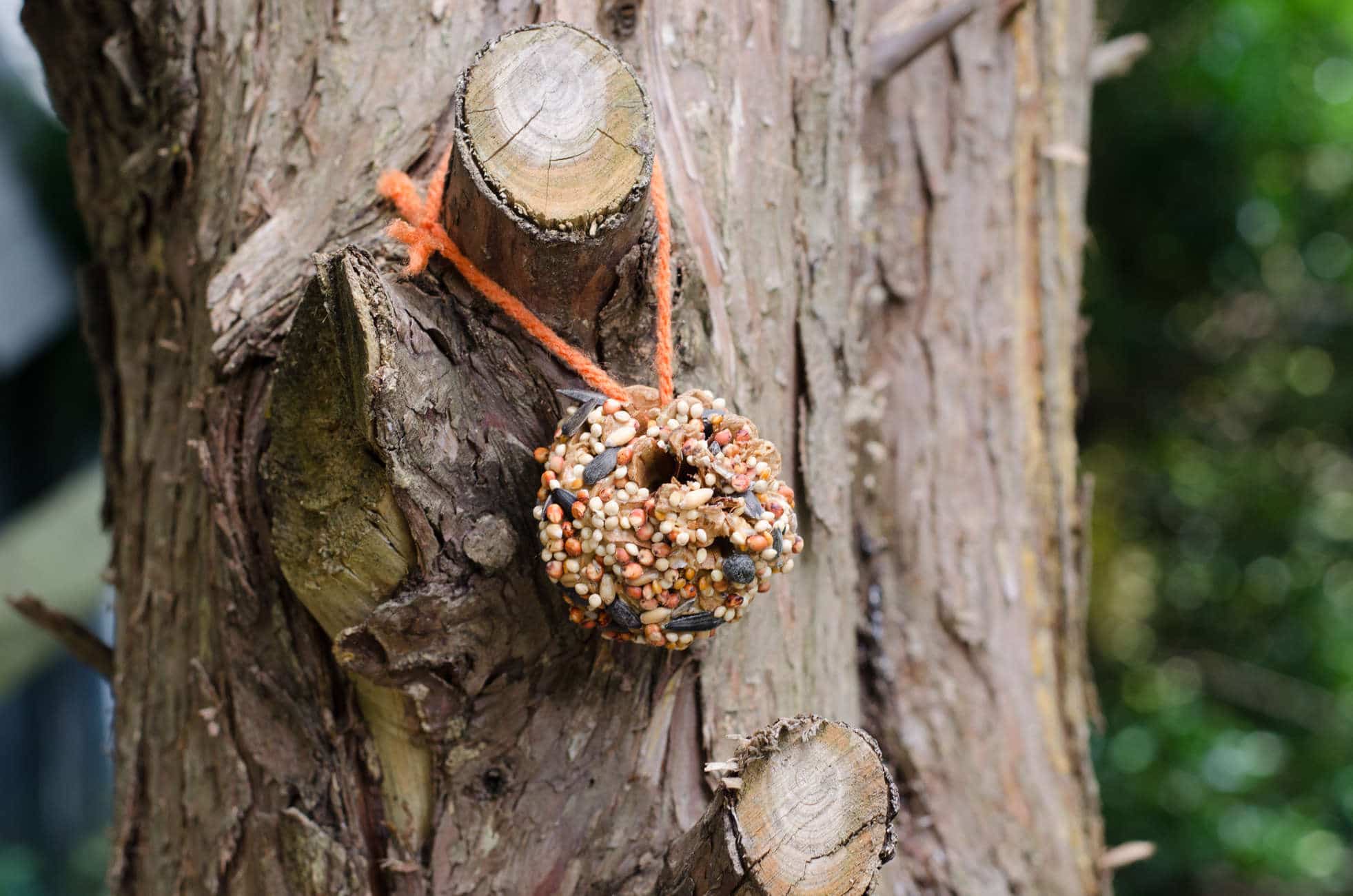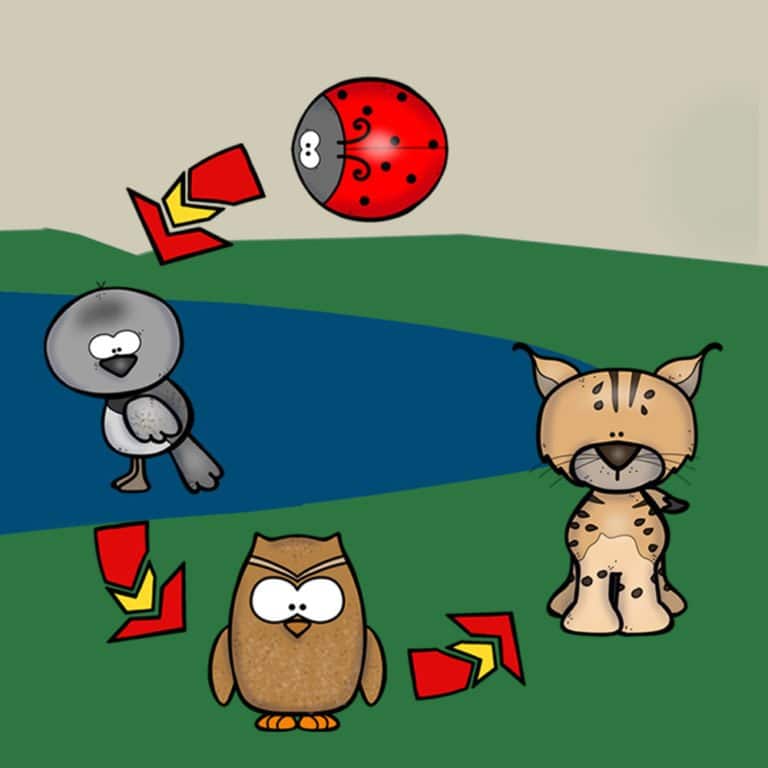Winter Animal Tracks Unit Study
Teaching your kids about animal tracks makes a perfect wintertime homeschool unit study.
During the other seasons, there are so many educational activities you can do outdoors, but winter can be a little tricky for finding fun and interesting ways to stoke your kids’ curiosity. Learning to identify a variety of winter animal tracks with your kids is something you can easily do with the printables below!
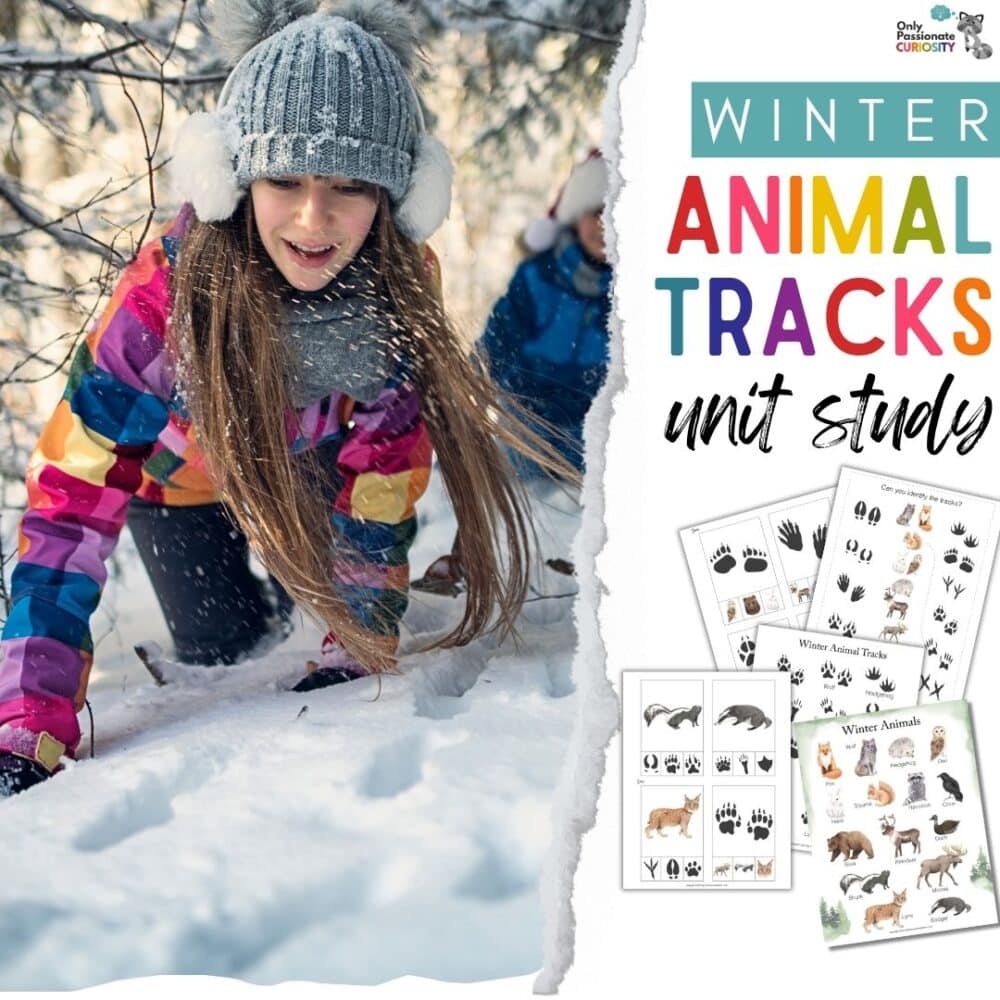
We also have some great ways you can expand this activity into a unit study as you explore the great outdoors via the woods, a local park, or even your own backyard. Learning to identify animal tracks can open up a whole new world of discovery as you and your kids explore the wonders of God’s creation in nature.
Understanding Animal Tracks
Animal tracks are a neat aspect of nature’s fingerprints, each one unique and telling a story about the creature that left it behind. By learning to recognize these tracks, you can start to piece together the movements and behaviors of the animals that live in your area.
The printables below will provide you with over 30 pages of printable activity sheets that will help you teach your kids about winter animal tracks in a fun and interactive way.
Here are some animal tracks you might encounter, some fairly common and some less so, along with a brief description of them:
- Skunk: Skunk tracks are distinctive, with five toes on both the front and hind feet. Their tracks are often found near water sources or areas with abundant food.
- Badger: Badger tracks are broad and flat, with long claw marks. They are often found in sandy or soft soil and can indicate the presence of these elusive animals.
- Fox: Fox tracks are similar to those of a small dog, with four toes and a triangular shape. They are often found in open fields and woodland areas.
- Wolf: Wolf tracks are large and show a clear distinction between the front and hind feet. They are usually found in remote wilderness areas, so it’s not likely you’ll come across them unless you’re on a long outdoorsy trek.
- Hare: Hare tracks are distinctive, with large hind feet that leave long, narrow impressions in the snow or mud. They are often found in areas with dense vegetation.
- Squirrel: Squirrel tracks are small and delicate, with four toes on the front and five on the hind feet. They are commonly found near trees and other sources of food. These are pretty easy to come across.
- Reindeer: Reindeer tracks are large and rounded, with two toes that spread widely apart. They are often found in snowy or mountainous regions.
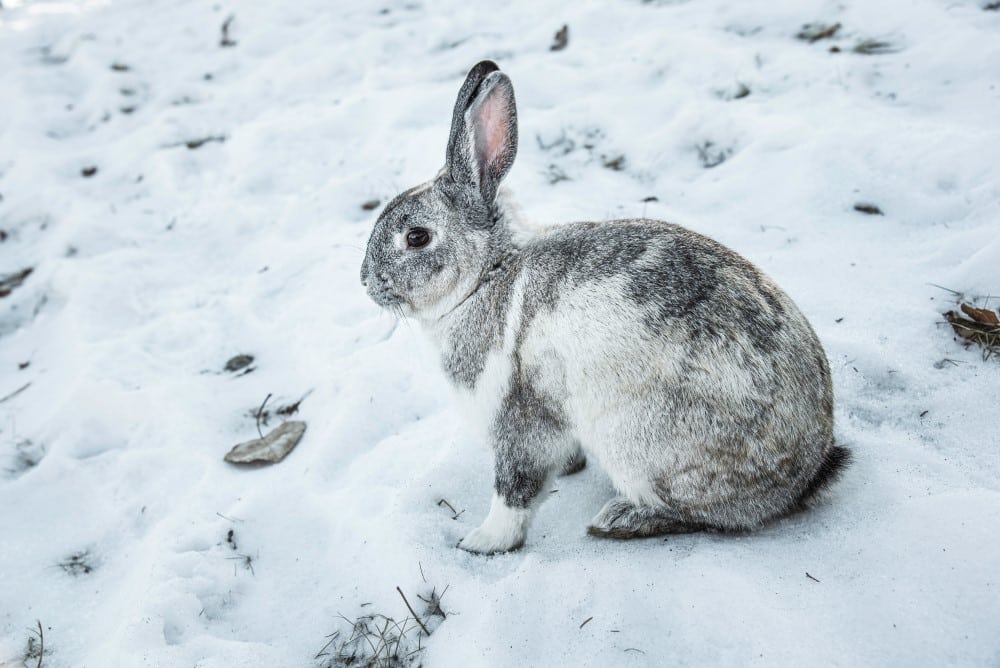
Winter Animal Tracks Activity Pages
To help kids learn about animal tracks, we’ve created a printable activity sheet. This sheet includes images of various animal tracks for them to identify, along with space to draw and write about each track they find. You can download the activity pages here:
Winter Animal Tracks Printable, Part 1
Winter Animal Tracks Printable, Part 2
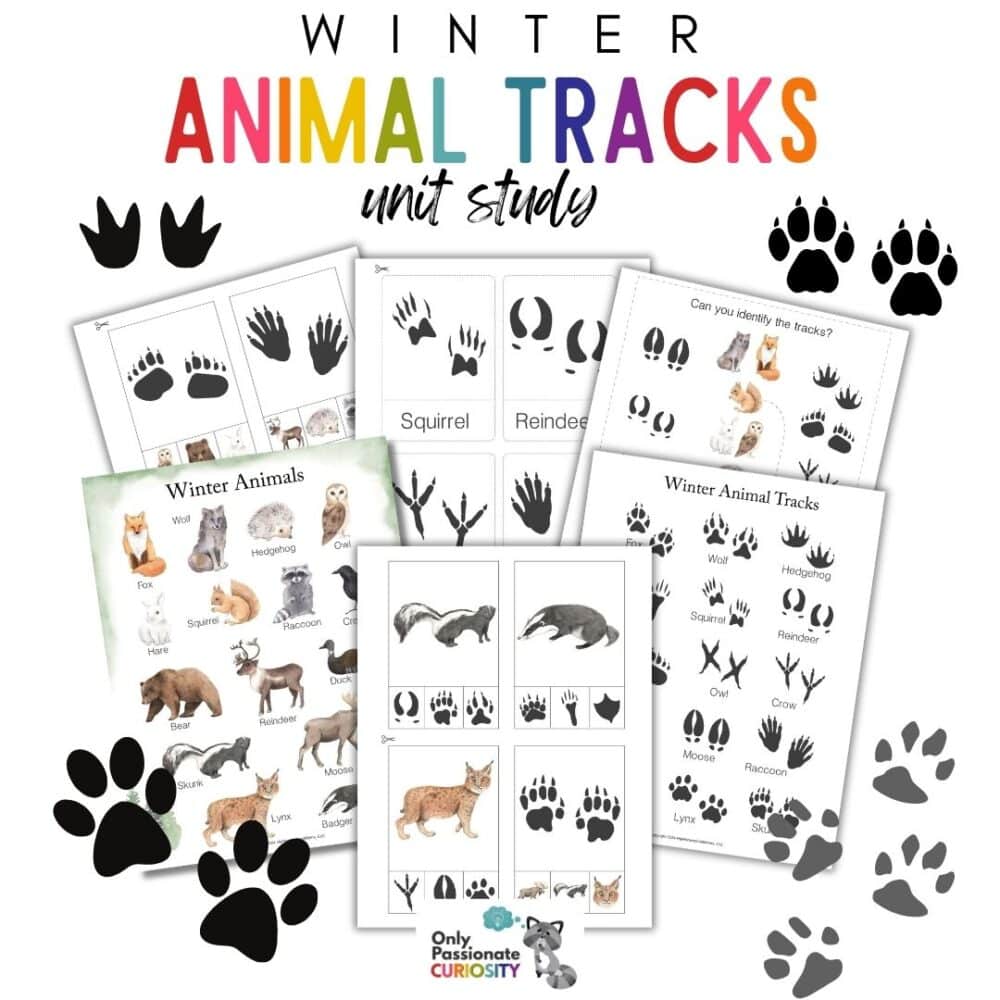
Winter Animal Tracks Unit Study
After familiarizing your kids with these animal tracks using the printable, here are some ways to expand learning about winter animal tracks into a unit study!
Print out the page of the printable that shows the image of the prints and what animal each set of prints belongs to. Then Head out on a winter nature walk with your kids and keep an eye out for animal tracks. Look for them in the freshly fallen snow. You might also find the tracks in packed snow that has been around for a while.
When you find a track, compare it to the images on the activity sheet and try to identify which animal it belongs to.
You’ll want to take a waterproof notebook or nature journal with you and some markers or pencils so you can draw the track you found. Another helpful tool would be a rule or measuring tape to mark how big the track is.
If you’re doing this unit study with younger children, you can draw or trace the tracks and have your child color them in. If you’re teaching older children, let them do the drawing.
Additionally, write down any observations about its size, shape, or location. Younger children can narrate the information for you to write down, and older children can write the information in their own journal.
Try to figure out how long the tracks have been there. For more in-depth learning about animal tracks, the book Mammal Tracks and Scat: A Life-Size Tracking Guide is an excellent resource!
If you have some aspiring photographers, have them take photos of the animal tracks. They can take photos from different angles, such as a close-up photo of the tracks, a photo with the child’s hand or shoes in the frame as a size comparison, etc.

You can also turn your animal tracking in the snow into a math lesson!
Follow these three steps of animal track investigation to transform your discovery into an adventure.
Once you’ve identified a few tracks, continue your learning adventure at home by taking some time to research the animals that made them. You can search online or in an animal encyclopedia to learn about:
- The habits of the animal
- The diet of the animal
- This animal’s chosen habitats
For a fun project to do at home, take handkerchiefs or strips of cloth and these animal track stamps. Let your kids create their own pattern of animal tracks on their hankies or cloth and have them as keepsakes.
Another in-house activity for young children is using these animal tracks playdough stampers to help them grow more adept at identifying animal tracks and having fun with playdough at the same time!
Learning about animal tracks is a fun and educational activity that can be enjoyed by kids of all ages. Not only does it teach them about the wildlife in their area, but it also encourages them to explore the outdoors and develop a deeper appreciation for God’s marvelous creation while stoking their sense of adventure.
More Winter Learning Activities
- Ideas, Resources, and Activities about Winter
- Winter Educational Activities
- Who Says You Can’t Learn Outdoors in Winter?



